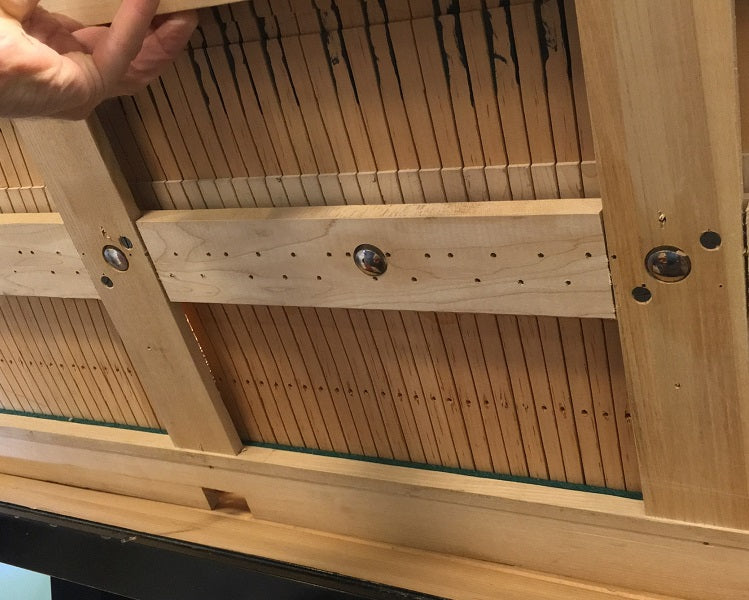Bedding the Cheekblocks:
What are the functions of a cheekblock? In a Steinway grand, a cheekblock provides three important services: positioning the action in-and-out for tone, side-to-side for soft-pedal shifting, and up-and-down to complete the crowned frontrail bedding. Arguably, there is a fourth function: securing action to keybed for when the piano goes on its side. And, of course, there are the casepart functions to hold and stop the fallboard. In any case, the guiding and holddown functions conflict, with downward pressure on pins that must slide freely and silently side-to-side.
